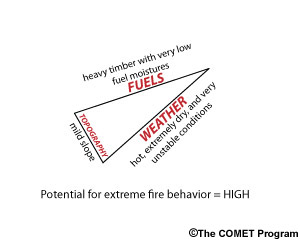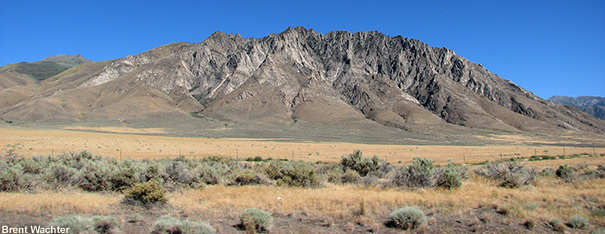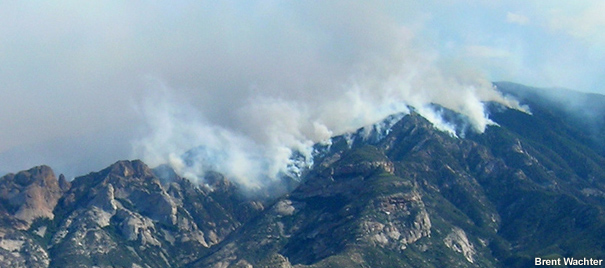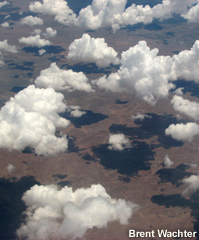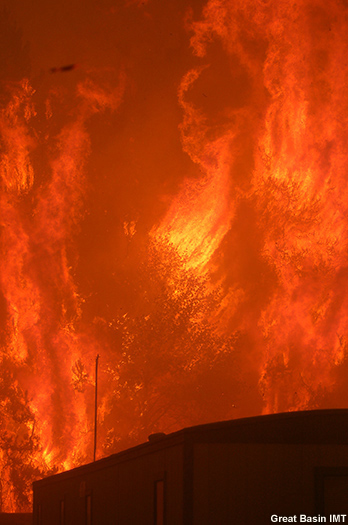Before reading through this learning module, please complete our pre-assessment. Taking the pre-assessment will help you see where you need to focus your learning as you work through the module, and taking the module quiz at the end will help you gauge how much you've learned once you're done. This information will also help the COMET team see how well the module teaches the key terminology and concepts of fire behavior.
Overview of Fire Behavior: Print Verison
Fire Environment Triangle
Fire Behavior Case Studies
- Ojo Feliz Wildfire
- Rough Draw Wildfire
- Rombo Mountain Wildfire
- Jungle Wildfire
- Cascade Complex Wildfire
Introduction
By now, you are probably quite familiar with the concept of the Fire Environment Triangle. This conceptual model is widely known because it is such an excellent tool for analyzing a given fire’s behavior. Just as the perimeter of a triangle is equal to the sum of its sides, we can say the presence or absence of extreme fire characteristics depend, in large part, on the presence or absence of fuel, terrain, and weather ingredients that support extreme fire development.
Thus, a fire in an area where fuels are abundant and well-cured, the weather is warm, dry, and windy, and the winds and fuels are aligned favorably with the terrain, has a good chance to exhibit extreme fire behavior. And, just like a geometric triangle, shrink any of the sides on the fire environment triangle, and you need a corresponding increase along one or both other dimensions to maintain the same overall potential for extreme fire behavior
So, where do you look to anticipate whether a fire is going to burn like a creeping grassfire or a raging blow-up?
You look to the fire environment triangle, of course!
In this section of the module, you will review the three dimensions of this conceptual model. Then, in the following section you will apply the model to a series of fire behavior scenarios.
Fuels
This section explores how the fuel dimension of the fire environment triangle contributes to fire behavior. Fuel properties include such factors as dryness, arrangement, quantity, and size. Fuel components include the vegetative materials found in ground, surface, and aerial layers.
A fuel complex is an association of different fuel components comprising a vegetative system. For example, a rangeland fuel complex consists of grass and brush, and a ponderosa complex consists of a pine overstory with grass, litter, or brush surface vegetation.
A fuel model is a simplified description of the typical fuel complex in an area. Fuel models are used as input to fire behavior models. The “Original 13” fire behavior fuel models, which describe conditions for different types of grass, chaparral, timber, and slash complexes, have been widely used.
In 2005, the US Forest Service Rocky Mountain Research Station published an expanded list of 40 different fuel models.
Plant species vary in their burn characteristics, including ease of ignition, volatility, energy release, spread rate, and spotting potential. Highly volatile plants, such as these saw palmetto and other plants comprising the Southern Rough fuel complex, can burn even under moist conditions. At the time this photo was taken, conditions were foggy, with 90% RH levels.
Fuel moisture affects fire spread rate, intensity, smoke production, fuel consumption and plant mortality. Fuels cannot burn until all fuel moisture has been vaporized, and the fuel is heated to its ignition temperature. The lower the moisture content is, the easier it becomes to ignite.
Fuel moisture varies greatly, depending on time of day, season, drought cycle, elevation, slope, aspect, exposure, fuel type, and whether the fuel is dead or alive.
Dead fuel moisture levels are mainly controlled by weather and climate patterns. Live fuel moisture levels also follow seasonal growing cycles during which plants “green up,” cure, and later go dormant.
When fuels are dormant, like the pre-green-up sagebrush (below left) near Albuquerque, NM in March, fuel moistures are much lower.
Three months later, green-up is complete, and vegetation in the same area is beginning to cure (below right). Notice that grasses have mostly dried out, while other plants are green. Greener fuels act as a heat sink, and moderate temperatures. When drought limits the green-up process, the fire season can be prolonged, increasing the potential for significant fire events.
Fuel continuity affects both fire behavior and propagation. Horizontal continuity promotes spread along the surface, while vertical continuity allows fire to move into the canopy fuel beds.
Notice in this picture the dead and down timber spread laterally under a continuous canopy. Plentiful ladder fuels would enable efficient fire spread from the surface to the canopy.
Here is an example of a fairly continuous canopy. Even under light winds, this canopy is dense enough to allow a crown fire to spread from tree to tree, independent of the surface fire.
Fuel size affects rate of spread. Fire spreads quickly through fine fuels such as grasses and small shrubs. Fires consuming heavy fuels, such as standing dead trees, burn more intensely, but may propagate more slowly.
Topography
Fire behavior is influenced both directly and indirectly by topographic factors such as slope, aspect, and elevation.
Upslope fire progression is quite different than downslope progression. Fire has a natural tendency to move upslope because fuels ahead of the fire front can be preheated by the hot exhaust, thus speeding ignition. In such situations, fire spread is usually more rapid than a downslope progression, where preheating is minimal.
The following photo shows an example of upslope propagation on the steep slopes of Mt. Graham, Arizona, on July 7th, 2004. Note in the photo how the small smoke plumes are oriented upward along the slopes, and merge at the ridgetops.
Aspect influences fire behavior in many ways. Fuel complexes and cure rates are all directly affected by diurnal and seasonal changes in the angle of solar radiation incident on a given slope. In addition, timing and intensity of solar heating varies with aspect and affects fire behavior and rate of spread.
For example, an inactive fire on a southwest slope in the early morning when the slope is shaded, may transform into an active fire as solar heating becomes more direct in the afternoon.
Elevation is another important factor to consider because fuel classes, loadings, and moisture levels usually vary by altitude.
Here, for example, are photos from three different elevations on Mt. Graham, Arizona. At the 5500-ft level, the forest is composed mostly of Pinon Pine, Juniper, and Scrub Oak. By 8000 ft, pines and some fir trees have supplanted much of the Scrub Oak. Further up, at the 10,000 ft level, fir trees are predominant. Even under similar weather conditions, fires will burn differently at each of these different elevation levels. This is primarily because of the differences in fuel types and loadings at different elevations. You must be aware not only of the fuel complexes in your forecast region, but how they vary with elevation and how these differences can affect fire behavior.
Soil moisture levels also often vary with elevation, affecting susceptibility of ground fuels to ignition and spread. The moist duff layer on the left side of the image below was found high in New Mexico’s Sandia mountains, at an altitude of 10,300 ft. The very dry duff layer below right was found in northeastern Arizona at an elevation of 7000 ft. Aside from elevation, other factors, such as drought cycles and duff type, profoundly affect soil moistures. For example, compact duff formed from short needle conifers tends to hold more moisture than sparse needlecast or oak leaf litter.




